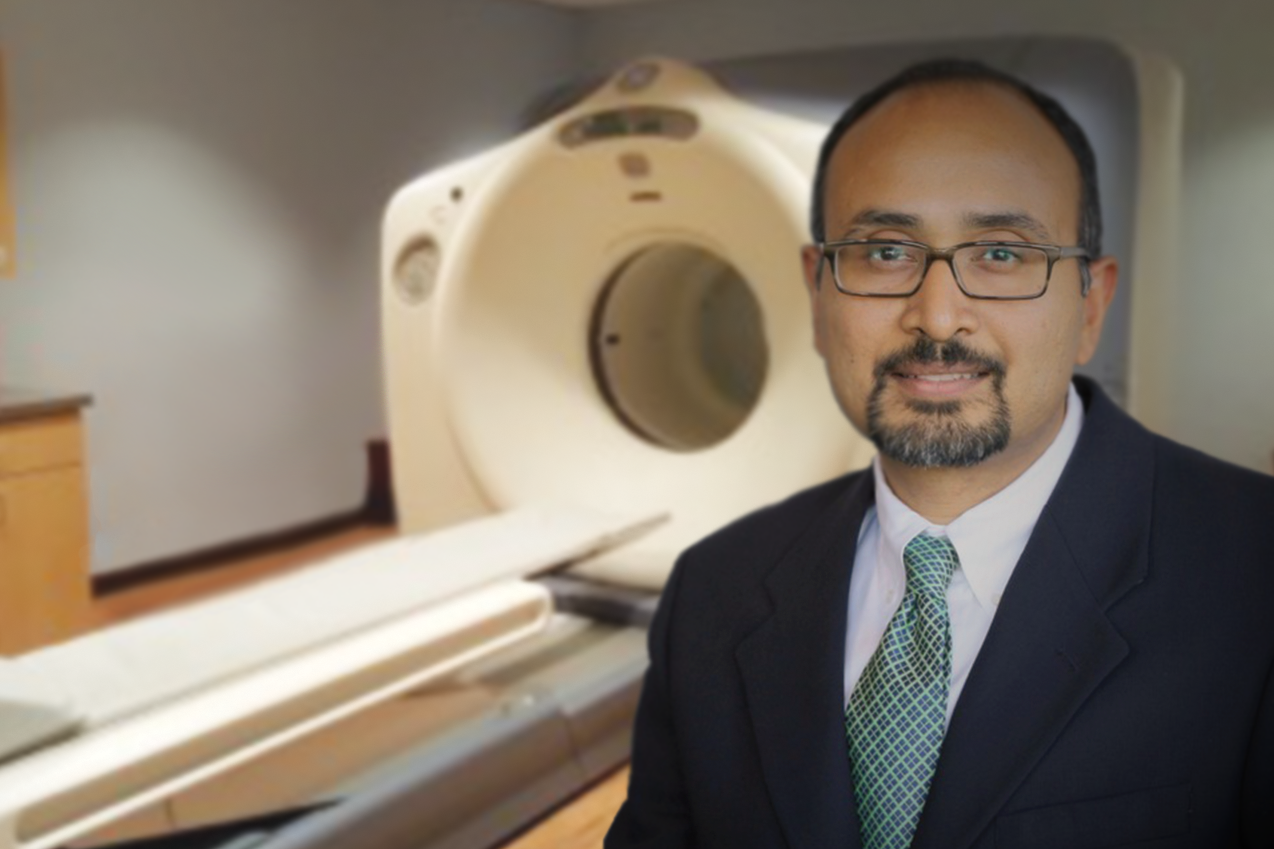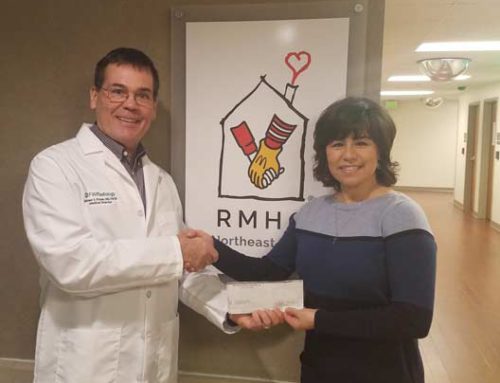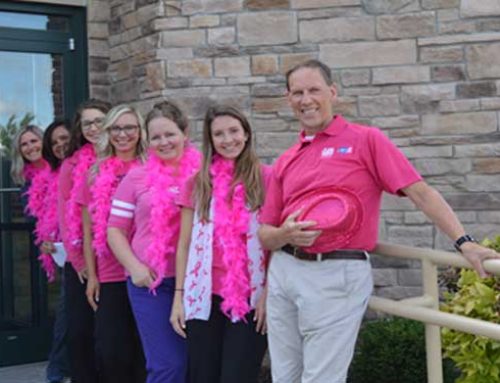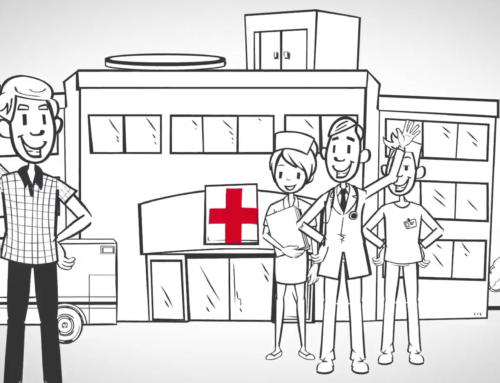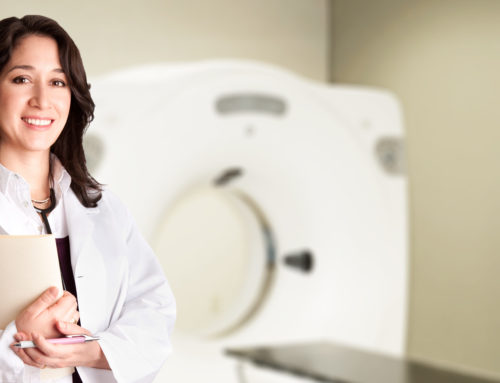Dr. Sai Yarram pulled a wallet from his pocket and pointed to a picture of his two children, Arjun, 5, and Mira, 1. “This,” the pediatric radiologist said, “is my motivation in life. These two. All I have to do is look at my kids every morning and that’s all the motivation I need to do my job.”
And part of that job these days is to find ways to limit the general exposure to the procedure of radiation-producing computerized tomography scans and more specifically the doses given children who do require CT scans.
“I have young kids,” Yarram said, “I wouldn’t want them to have a CT scan unless it was necessary. If they’re in a car accident, yeah, give them a CT scan because it’s the best (tool) we have to image someone who’s been in a trauma situation. But if my son has some sort of abdominal pain, I’m not running right away to the emergency room asking for a CT.”
Other parents likely have. A recently published national study showed that CT scans performed on children in hospital emergency rooms increased from 330,000 in 1995 to 1.65 million in 2008. Put another way: The study found that CT scans were performed in almost 6 percent of children’s emergency room visits in 2008 compared to 1 percent in 1995. Locally, the percentages were slightly higher than 6 percent at Lutheran Hospital and slightly lower at Parkview Hospital.
Health care providers nationally and regionally, aware that children are more susceptible to the effects of radiation, have begun developing protocols to educate clinicians and parents about CT scans and look for ways to both ensure appropriate use of CT scans and lower the dosages used for children while still producing images that can be effectively interpreted.
Both Parkview Health, which Yarram serves through FWRadiology, and Lutheran Health Network’s three Allen County hospitals are among the health care providers focusing on CT scans for children.
The scans – for children and adults – combine a series of X-ray views taken from multiple angles to produce images of bones and soft tissues.
Radiology professionals said they are popular diagnostic tools because they are fast, convenient and precise. And that, they said, leads physicians to sometimes practice defensive medicine to make sure they don’t miss a problem or parents to demand CT scans be performed on a child even after a physician is certain the procedure isn’t needed.
“We’ve noticed that there are a lot of parents, for whatever reason, that want a CT scan not knowing full well the risks and benefits that come with it,” said Yarram, who, according to Parkview, is the only pediatric radiologist north of Indianapolis.
Added Dr. Thomas Gutwein, medical director of the Parkview Hospital emergency department: “I think (increased use) is a combination of malpractice liability protection for the physician, the peace of mind for everyone and the insistence of a patient’s family.”
The most significant risk from CT scans is that they emit more radiation than a traditional X-ray. And that radiation, Parkview and Lutheran professionals said, has the potential of causing cancer.
Dr. Richard Sibley of Summit Radiology, who serves Lutheran Health, said children are particularly sensitive to radiation because they live longer, thus providing a more prolonged window for cancer to develop. Yarram said children are also more sensitive to radiation because their cells are still dividing.
Dr. Donald Frush, chair of the advisory American College of Radiology Pediatric Imaging Commission, said there is considerable debate about how much exposure to CT scan radiation poses a significant risk of cancer, but he said cumulative doses over relatively short time spans certainly increase the risk.
Yarram, meanwhile, estimated the odds of a child eventually acquiring cancer from an abdominal CT scan are one in 2,000 and one in 8,000 or 10,000 for a head scan. By comparison, Yarram said, the risk of dying from appendicitis is about one in 500.
Yarram is focusing on developing educational and procedural protocols for emergency departments because a significant number of CT scans are performed in there, where trauma cases typically are handled.
The overall percentage of patients receiving CT scans in emergency departments at Parkview Hospital and three regional system hospitals ranged from 53.7 percent in 2008 to 53.4 percent in 2010. Between 2009 and April 2011, the percentage of patients receiving CT scans performed at Lutheran Hospital’s emergency department ranged from 39.9 percent to 42 percent.
Since arriving at Parkview in 2008, Yarram said CT scan dosages for children have been reduced to less than 2 millisieverts for head scans and less than 8 millisieverts for abdominal scans through advances in technology, use of bismuth shielding and other adjustments. By 2012, he said, Parkview will have technology in place to reduce some dosages to 1 millisievert.
By comparison, people are exposed to 3 millisieverts of naturally occurring background radiation every year, and over time that will exceed one-time or occasional exposures to CT scan radiation, according to figures supplied by the Alliance for Radiation Safety in Pediatric Imaging, which launched an Image Gently national campaign in 2008.
At Lutheran, which is following precepts issued by Image Gently, officials also are developing various educational and procedural protocols, and are lowering doses by more precisely pinpointing the areas of the body that will be scanned, said Thomas Earnest, director of radiology services.
Both health care providers are also increasingly considering nonradioactive diagnostic procedures like ultrasound and magnetic resonance imaging for certain tests, although the time it takes to conduct an MRI is sometimes problematic for children.
Above all, and particularly where it pertains to children, Parkview and Lutheran are focusing on educating clinicians and parents, and both institutions plan to soon make available comprehensive informational documents related to CT scans.
The health care providers also will be more proactive in assessing the case-by-case need for CT scans and developing and analyzing CT scan use statistics, including the outcomes of the scans.
“We’re going to question every order that we get on a pediatric patient,” said Earnest. “Is this the proper test? Is this necessary? Or can ultrasound be done or something else be done”
Frush said campaigns like Image Gently have elevated attention to pediatric CT scan imaging from “the height of ignorance” about the effects of the procedure to much greater enlightenment and action.
He said a recent and as-yet unpublished national study by the American College of Radiology surveyed more than 200 health care practices and found that more than 90 percent of the practices had heard of Image Gently and more than 50 percent were using lower doses for brain and body CT scans involving children.
Frush said assessing appropriate uses of CT scans, lowering doses and being “able to discuss risk with colleagues and with patients in a fashion that’s understandable is a good outcome. Before, we had a lot of ‘I-don’t-knows.’ We all functioned 10 years ago in an arena of poor information.”
One area of CT scanning that likely won’t be adjusted is the emergency use of scans on children – or adults – suffering from significant trauma.
“It’s all risk-benefit,” said Andrea Fuller, a CT scan technologist at Lutheran Hospital. “If you have a head bleed, your chances of dying without a CT scan are probably a heck of a lot more than if you had a CT scan.”
Gutwein cautioned, however, that a good neurological exam also is important in advance of considering a CT scan, and he said sometimes he will suggest to insistent parents that they wait for 45 minutes to an hour so that physicians can better assess if a child’s symptoms require a CT scan.
“Never has anyone I’ve ever told, ‘Let’s wait for 45 minutes,’ ever needed a CT scan,” Gutwein said. “Usually by 30 minutes, the parent is saying, ‘Hey, he’s acting great. We’re going to go home.'”
But for those children who do require a CT scan, radiologists like Yarram are determined to lower radiation exposure and minimize the cancer risk as much as possible.
For him, the impetus stems in part from a life-changing crisis a little more than five years ago when he was considering what kind of radiology to practice. His wife, Carrie, suffered complications during the birth of the couple’s son and both she and the infant landed in intensive care.
“Pediatric radiology was more appealing to me, as there was a national shortage of pediatric radiologists,” Yarram said. “(But) I coincidentally had a life-changing event happen with my wife’s pregnancy.
“(Arjun), along with my 1-year-old daughter, are the joys of my life and serve as daily motivation and reinforce my career decision.”

